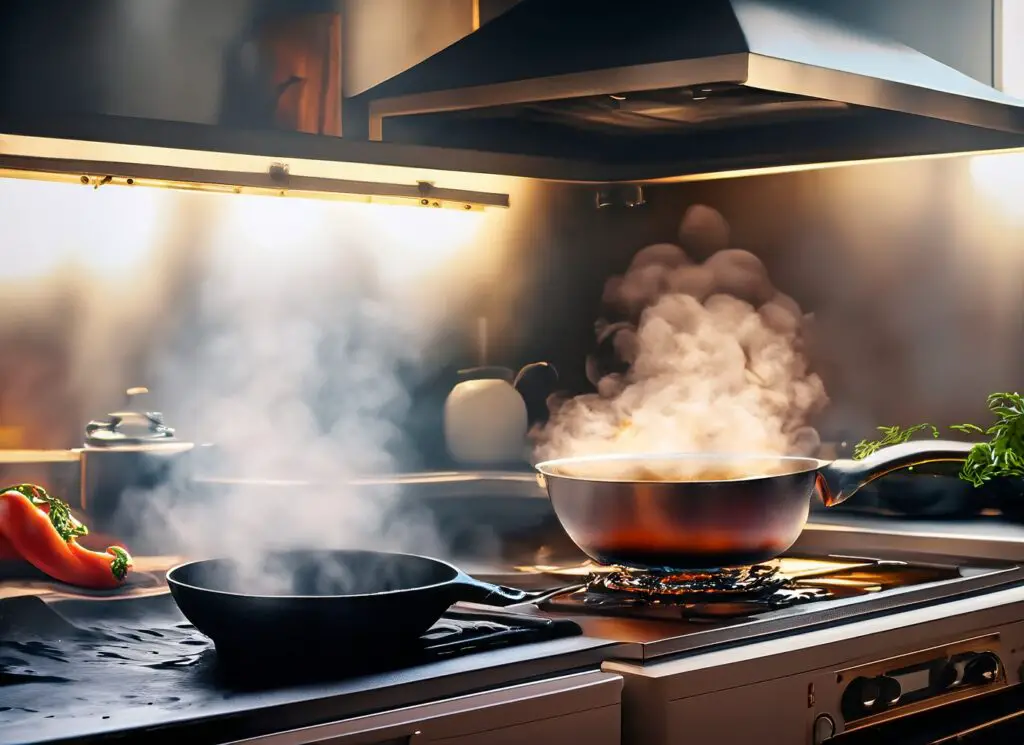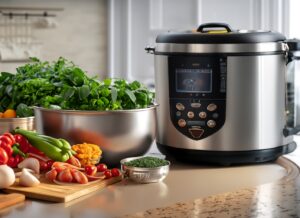Ever found yourself puzzled over the great debate of skillet vs frying pan?
If you’re a home cook or a kitchen enthusiast, you’ve probably wondered what exactly sets a skillet apart from a frying pan. Is it just a name, or are there real, functional differences?
The truth is, while skillets and frying pans are often used interchangeably, they do have distinct characteristics. A skillet generally has deeper sides and is versatile for a range of cooking methods, whereas a frying pan is shallower and best for tasks like shallow-frying and moderate-temperature searing.
Curious to dive deeper into this culinary conundrum? Stick around. As a seasoned cook and kitchenware aficionado, I’ll guide you through the nitty-gritty differences between these two essential cooking vessels. You’ll learn about material options like cast iron and non-stick, and I’ll even tackle questions you might not have thought to ask, like “Can you use a skillet instead of a frying pan?” and “Why is a skillet better for certain cooking methods?” Let’s demystify your cookware choices together.
Key Facts:
(Source: Expert Team Research)
- Skillets and frying pans are essentially the same cooking vessel, with the only difference being the name.
- Both skillets and frying pans are used for cooking food over high temperatures, particularly for frying or sautéing.
- Skillets typically have a deeper and larger surface compared to standard frying pans.
- Skillets are measured in diameter across the top rim, while sauté pans are measured in volume, typically in quarts or liters.
- Sauté pans have taller sides that allow them to hold a greater volume of liquid than skillets.
Skillet vs Frying Pan: What Sets Them Apart?
The terms “skillet” and “frying pan” are often used interchangeably, and in most cases, they refer to the same type of pan. Both have flat bottoms, flared sides, a shallow depth, and no lids. However, there are some subtle differences between the two.
- Depth: A skillet is typically deeper than a frying pan, with sides that rise about 2 inches high. This makes it a better choice for cooking foods that need more liquid, such as sauces, stews, and stir-fries. A frying pan, on the other hand, has shorter sides, typically about 1 inch high. This makes it better for cooking foods that need to be flipped or stirred frequently, such as pancakes, eggs, and fish.
- Material: Skillets can be made from a variety of materials, including cast iron, stainless steel, aluminum, and copper. Frying pans are most commonly made from aluminum or nonstick materials. Cast iron skillets are the most versatile and can be used for a variety of cooking methods, including frying, searing, baking, and roasting. Stainless steel skillets are also versatile and can withstand high heat. Aluminum skillets are lightweight and heat up quickly, but they can be prone to warping. Nonstick skillets are easy to clean, but they can’t be used for high heat cooking.
- Heat retention: A skillet made from a material that conducts heat well, such as cast iron or copper, will retain heat better than a frying pan made from a material that conducts heat less well, such as aluminum. This means that a skillet will cook food more evenly and prevent it from sticking to the bottom of the pan.
Ultimately, the best choice for you will depend on your cooking needs and preferences. If you cook a variety of dishes and need a pan that can do it all, then a cast iron skillet is a good option. If you’re looking for a lightweight pan that heats up quickly, then an aluminum frying pan is a good choice. And if you want a pan that’s easy to clean, then a nonstick frying pan is a good option.

Here is a table summarizing the key differences between skillets and frying pans:
| Feature | Skillet | Frying Pan |
|---|---|---|
| Depth | Deeper | Shallower |
| Material | Cast iron, stainless steel, aluminum, copper | Aluminum, nonstick |
| Heat retention | Better | Worse |
| Versatility | More versatile | Less versatile |
| Cleaning | More difficult | Easier |
What is a Skillet?
A skillet is a deep, flat-bottomed pan with sloping sides. It’s often made from cast iron but can also be found in other materials like stainless steel and aluminum. The skillet is a versatile cooking vessel, perfect for a variety of cooking methods from frying to braising.
Why Choose a Skillet?
Key Takeaway: A skillet is your go-to for versatile cooking.
Skillets are incredibly versatile. You can use them for braising, stewing, and even deep-frying. The depth of a skillet allows for more liquid, making it ideal for recipes that require simmering.
What is a Frying Pan?
A frying pan is a shallow, flat-bottomed pan with flared or straight sides. It’s commonly made from materials like aluminum or stainless steel and is coated with non-stick material.
Why Choose a Frying Pan?
Tip: A frying pan is your best friend for quick, high-heat cooking like sautéing.
Frying pans are best for tasks that require less liquid and higher heat. Think sautéing vegetables or searing a steak. The shallower sides make it easier to flip or stir food.
Similarities and Differences: A Side-by-Side Comparison
Both skillets and frying pans have flat bottoms and sloping sides, making them ideal for cooking food over high heat.
Key Differences
Key Takeaway: Skillets are deeper and more versatile, while frying pans are shallower and better for high-heat, quick cooking methods.
Skillets generally have deeper sides and a larger cooking surface, making them more versatile for a variety of cooking methods. Frying pans, on the other hand, are shallower and better suited for tasks like shallow-frying and sautéing.
Which is More Versatile?
Skillets are more versatile than frying pans. They can handle a wider range of cooking methods, from deep-frying to simmering sauces.
Material Matters: What Are They Made Of?
Cast Iron Skillets
Cast iron skillets are durable and can handle high heat, but they require special care like seasoning to maintain their non-stick properties.
Aluminum and Stainless Steel Frying Pans
Aluminum and stainless steel frying pans are lighter and easier to handle, but they may not distribute heat as evenly as cast iron.
How to Choose: Skillet or Frying Pan?
Consider Your Cooking Needs
If you need a versatile pan that can handle a variety of cooking methods, go for a skillet. If you’re more into quick, high-heat cooking, a frying pan might be more up your alley.
Consult the Experts
If you’re still unsure, it’s always a good idea to consult with professional chefs or cookware retailers to find the pan that best suits your cooking needs.
FAQs About Skillet vs Frying Pan
Can you use a skillet instead of a frying pan?
Yes, you can use a skillet instead of a frying pan, but keep in mind that skillets are generally deeper and may affect cooking time.
Why is a skillet better than a pan?
A skillet is generally better than a pan when you need to cook with more liquid or use varied cooking methods like braising.
What is the difference between a skillet and a sauté pan?
A skillet is generally deeper with sloping sides, while a sauté pan has straight sides and is measured in volume.
Summary
In a nutshell, the debate between skillet vs frying pan boils down to depth and versatility. Skillets are deeper and more versatile, suitable for a range of cooking methods. Frying pans are shallower, designed for quick, high-heat cooking like sautéing.





